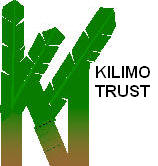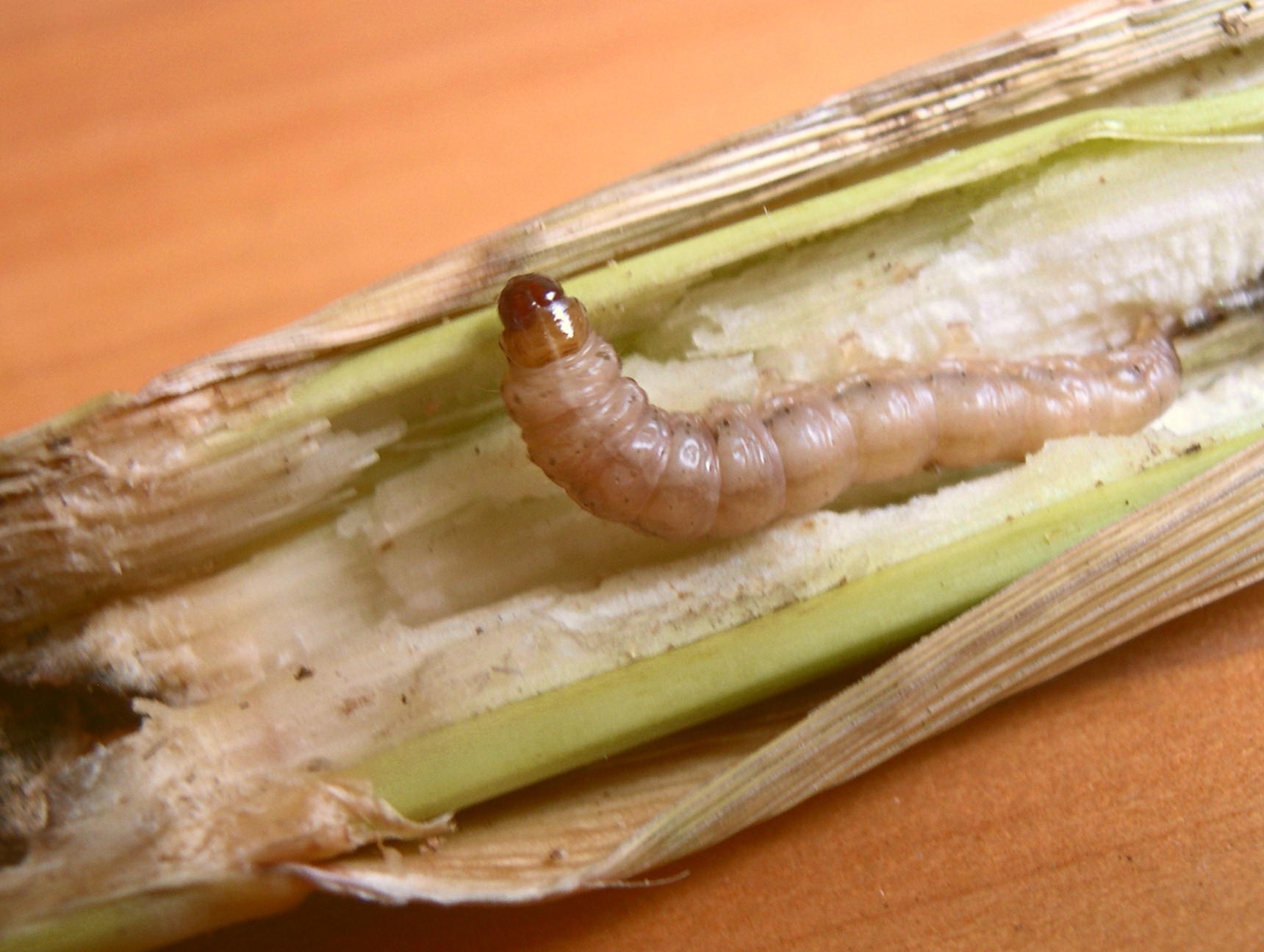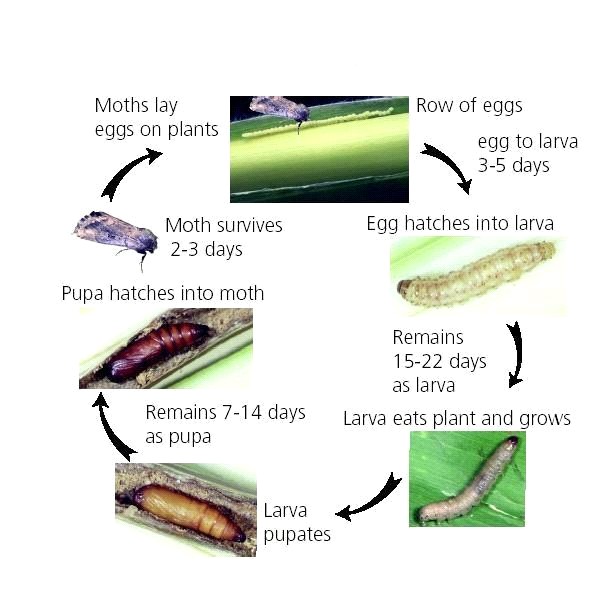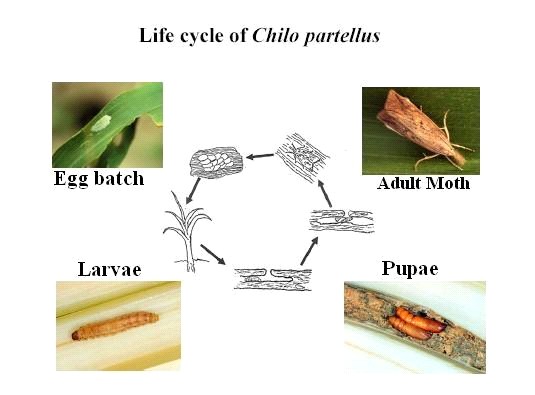|
Collaborators
Rothamsted
Research
KARI
NALEP &
KAPP
NARO
Ministry of Agriculture,Kenya
Ministry of Livestock & Fisheries, Kenya
Government of Kenya
Ministry of
Agriculture, Tanzania
NGOs
FUNDED BY:


PROJECT LEADER:
DR.ZEYAUR
R.KHAN
WEBMASTER:
PHILEMON ORONDO
|
|
| Stemborers
Stemborers are of
greatest importance as pests of maize in Africa, but they also attack
other cereal crops such as sorghum, millet and sugarcane. Damage
is caused by larvae which first feed on young leaves, but soon enter
into the stems. During early stage of the crop growth larvae may kill
the growing points resulting in dead hearts.
.jpg) 
A
maize plant damaged by stemborer larvae.
Stemborer larva inside a maize stem.
In Eastern Africa there are two species of stemborers
which cause heavy damage to cereal crops –Busseola fusca and
Chilo partellus. Busseola fusca is indigenous to Africa and
is present in high and mid altitude areas (3500 ft and above sea level).
Chilo partellus accidentally came to Africa from Asia in 1930s.
Chilo partellus is present on low and mid altitude areas (zero to
4000 ft above sea level). Adult moths lay eggs on maize plants, larvae emerge
and after feeding on leaves for two to three days enter inside maize
stems. Busseola fusca lays its eggs between stem and leaf
sheaths, whereas Chilo partellus lays its eggs on plant surface
in form of egg batches.

After larvae bore into maize stems, they feed and grow within maize
stems for 2-3 weeks.
When larvae are fully grown, they pupate and remain inside maize stem.
After 7-14 days adults emerge from pupae and come out of the stem. They
mate and lay eggs on maize plants again and continue damaging the crop.

|
© Copyright 2002 - 2007 ICIPE. All Rights Reserved.
|
|



